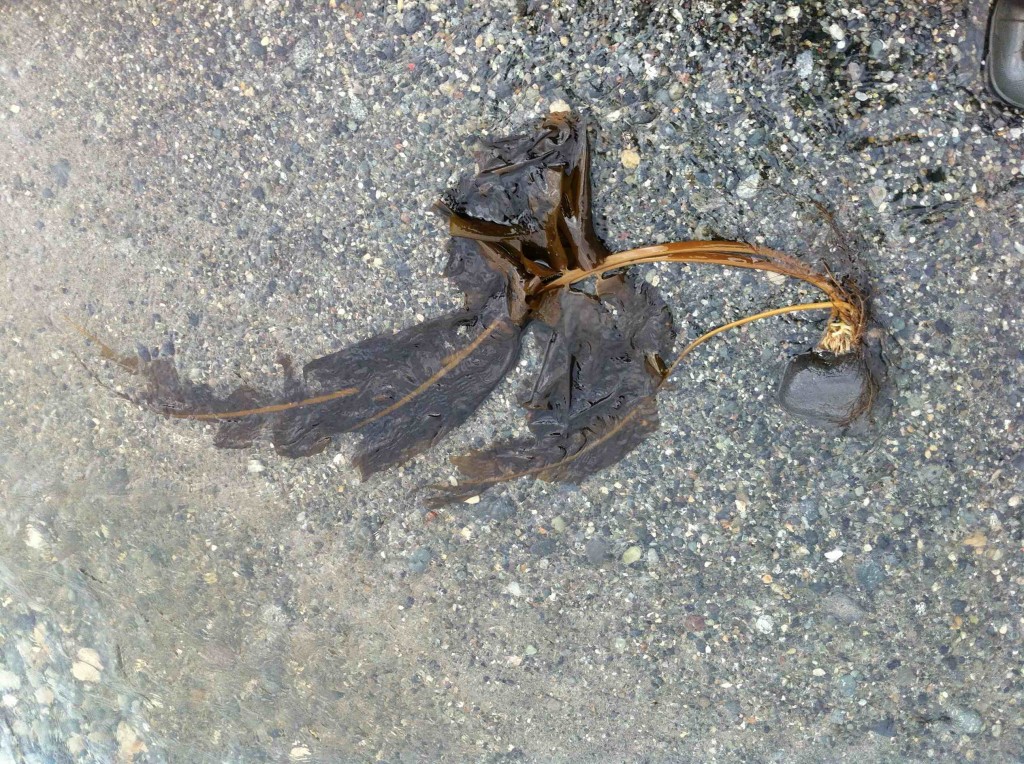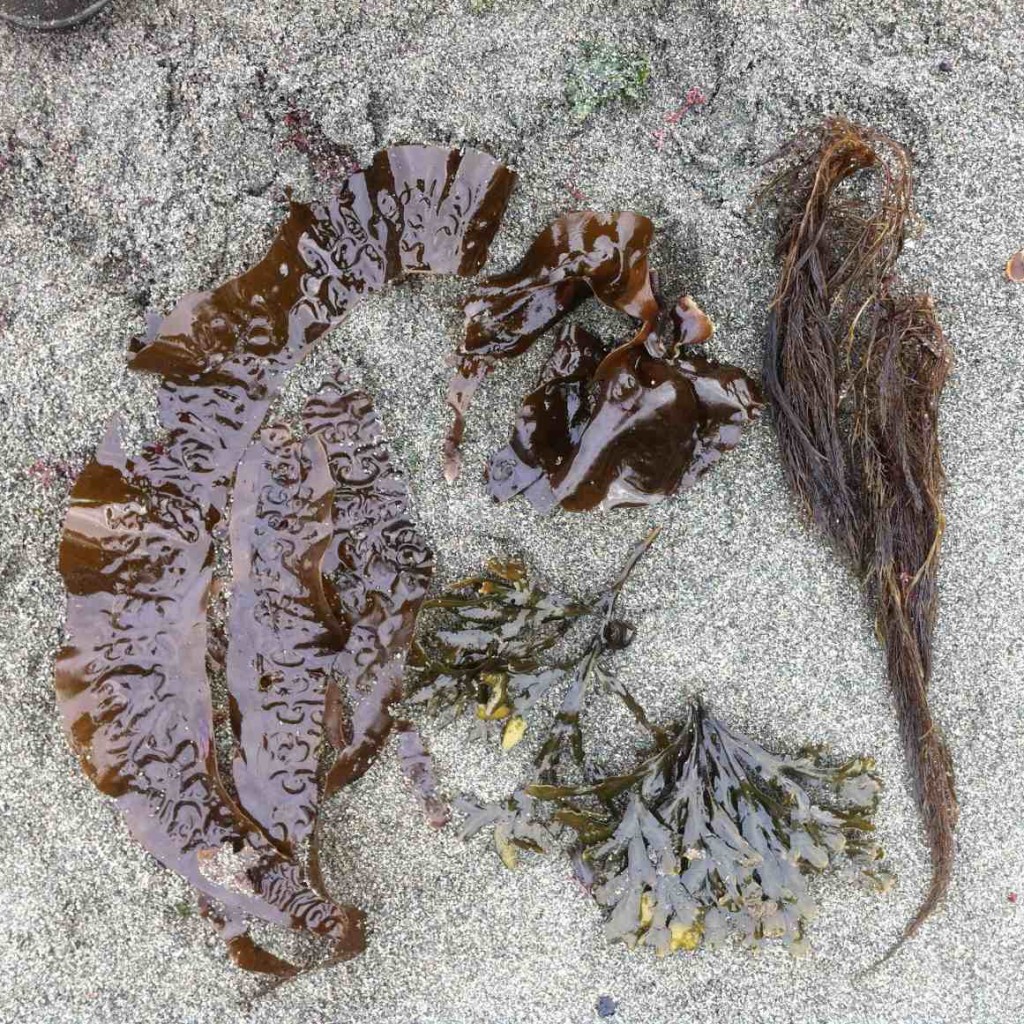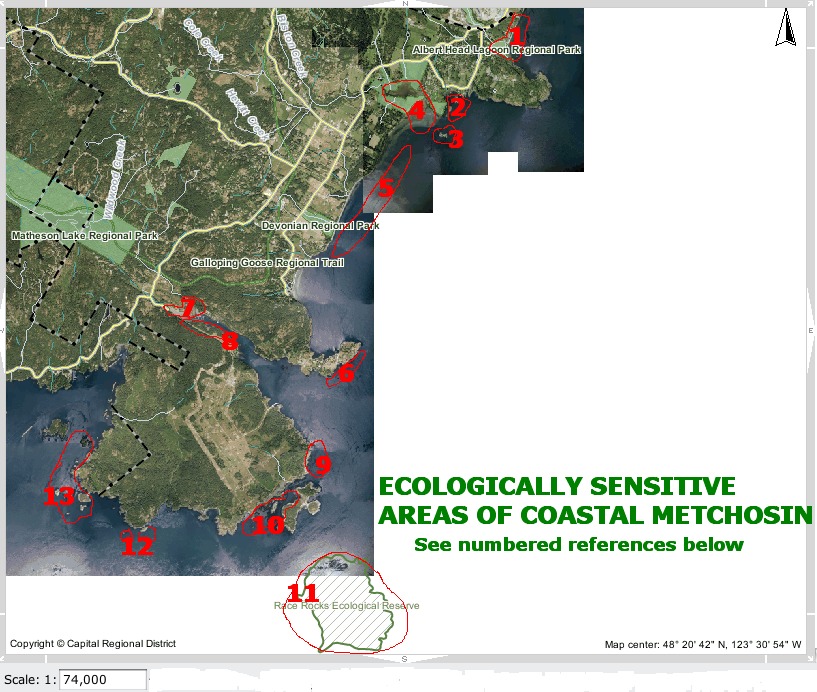Today there is a strong swell from the North East on Taylor beach which has deposited a good sample of the diversity of the algae that live in the subtidal zone just below the low-tide level.

Taylor Beach in Parry Bay at the southern end of Vancouver Island. This beach gets winds and waves from the East in the fall, winter and spring months, but is protected by having only west winds from June to September. There is long-shore drift toward the north end of the beach in the summer as the energy from the westerlies refract around William Head, visible in the distance on the left.
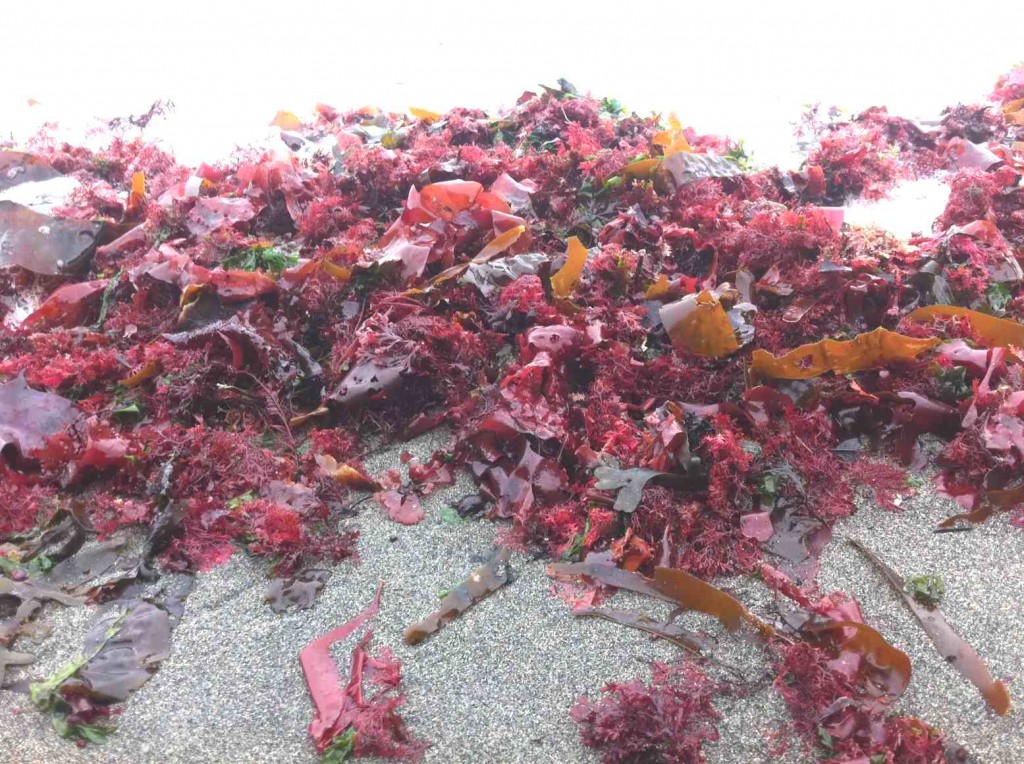
The Red algae as they lay in the strand line showing the upper limits of the last high tide and the swell which deposited the algae.
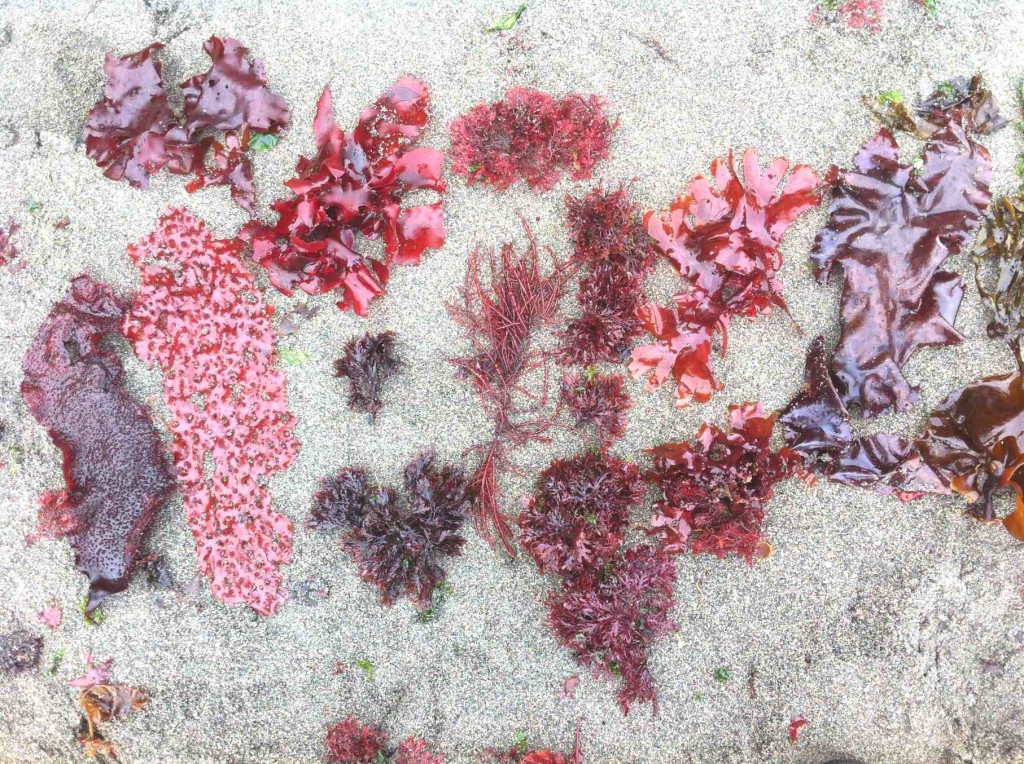
The greatest biodiversity is shown in the Rhodophytes or red algae shown here picked out from the strand line within a few square metres.
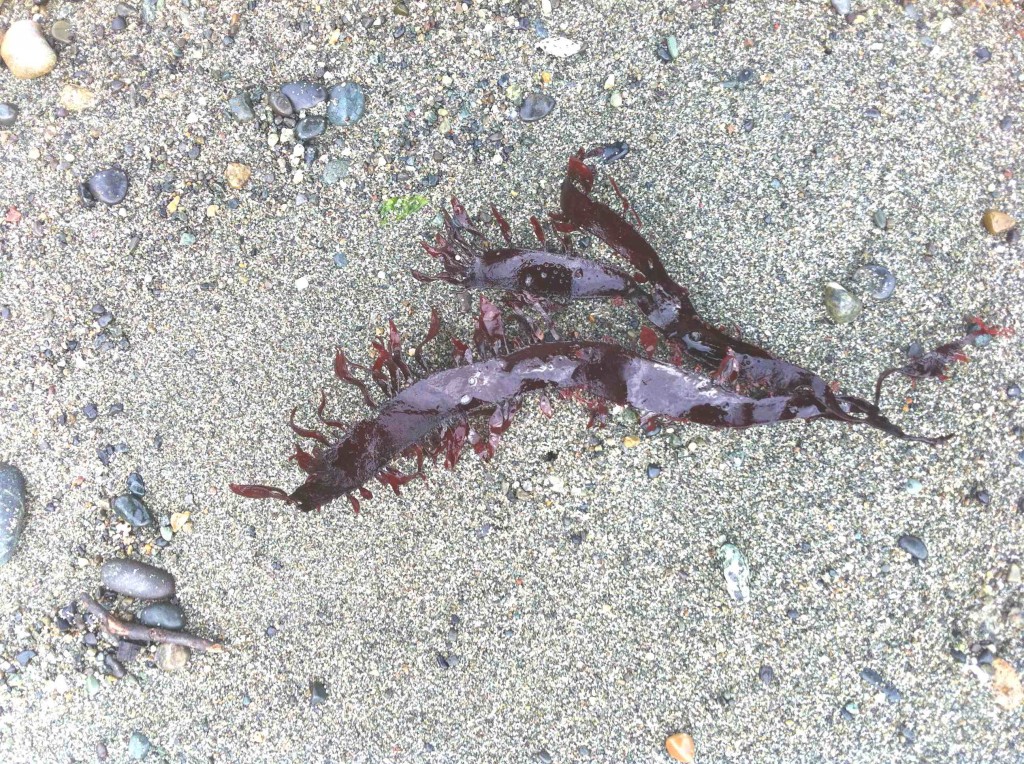
A sample of the red algae, Prionitis lanceolata . which is normally found on the low intertidal of rocky shores.

